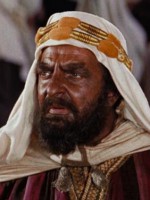John Coquillon is a Director of Photography and Cinematography Canadien born on 29 july 1930 at The Hague (Royaume des Pays-Bas)
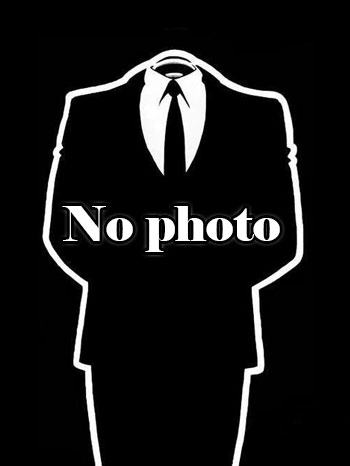
John Coquillon (1930–1987) was a Dutch-born cinematographer.
Born in The Hague, Netherlands, Coquillon started in the British film industry as a Pinewood Studios clapper loader in the 1950s before becoming a documentary cameraman later in the decade shooting numerous wildlife movies throughout Africa. Coquillon relocated from Africa back to the UK in the mid-1960s. His ability to work speedily and utilize natural light brought him to the attention of writer Alfred Shaughnessy, who recommended Coquillon to director Michael Reeves for Witchfinder General (1968), the first of several horror films that he worked on as Director of Photography for American International Pictures.
In 1971, Coquillon began a fruitful working relationship with Sam Peckinpah, first serving as cinematographer for the controversial director’s critically acclaimed Straw Dogs. He later shot Peckinpah’s Pat Garrett and Billy the Kid (1973), Cross of Iron (1977), and The Osterman Weekend (1983). After Osterman, the majority of Coquillon’s remaining credits were in television, including the television movie Ivanhoe (1982) and numerous miniseries.
Coquillon’s other films include The Wilby Conspiracy (1975) and Clockwise (1986). He won the Best Cinematographer Genie Award in 1980 for The Changeling.
Son premier film comme chef opérateur est un documentaire américain réalisé en Afrique, sorti en 1956. Jusqu'en 1967, il participe à d'autres documentaires (canadiens) et à des films pour enfants.
Par la suite, il contribue notamment à des films d'horreur, tels le film britannique Le Cercueil vivant de Gordon Hessler (1969, avec Vincent Price et Christopher Lee) et le film canadien L'Enfant du diable de Peter Medak (1980, avec George C. Scott et Trish Van Devere) — le second lui permet de gagner en 1980 le Prix Génie de la meilleure photographie —.
Notons qu'il retourne filmer plusieurs fois en Afrique, où il est par exemple directeur de la photographie sur Le Dernier Safari d'Henry Hathaway (en seconde équipe, 1967, avec Stewart Granger) et Le Vent de la violence de Ralph Nelson (1975, avec Sidney Poitier et Michael Caine).
Mais il reste surtout connu pour sa collaboration avec le réalisateur Sam Peckinpah sur quatre films, Les Chiens de paille (1971, avec Dustin Hoffman et Susan George), Pat Garrett et Billy le Kid (1973, avec James Coburn et Kris Kristofferson dans les rôles-titre), Croix de fer (1977, avec James Coburn et Maximilian Schell), et enfin Osterman week-end (1983, avec Rutger Hauer et John Hurt).
Son avant-dernier film est Clockwise de Christopher Morahan (1986, avec John Cleese et Penelope Wilton). Le dernier sort en juin 1988, un an et demi après sa mort par suicide, début 1987.
John Coquillon est également directeur de la photographie à la télévision, où il travaille sur douze téléfilms diffusés entre 1976 et 1987, dont À l'Ouest, rien de nouveau de Delbert Mann (1979, avec Richard Thomas et Ernest Borgnine).
S'y ajoutent quatre séries dans les années 1980, dont Pour l'amour du risque (deux épisodes, 1983) et Magnum (deux épisodes, 1985).
Source : Wikidata
John Coquillon

Birth name Albert Louis Coquillon
Nationality Canada
Birth 29 july 1930 at The Hague (Royaume des Pays-Bas)
Death 1 january 1987 (at 56 years)
Nationality Canada
Birth 29 july 1930 at The Hague (Royaume des Pays-Bas)
Death 1 january 1987 (at 56 years)
Born in The Hague, Netherlands, Coquillon started in the British film industry as a Pinewood Studios clapper loader in the 1950s before becoming a documentary cameraman later in the decade shooting numerous wildlife movies throughout Africa. Coquillon relocated from Africa back to the UK in the mid-1960s. His ability to work speedily and utilize natural light brought him to the attention of writer Alfred Shaughnessy, who recommended Coquillon to director Michael Reeves for Witchfinder General (1968), the first of several horror films that he worked on as Director of Photography for American International Pictures.
In 1971, Coquillon began a fruitful working relationship with Sam Peckinpah, first serving as cinematographer for the controversial director’s critically acclaimed Straw Dogs. He later shot Peckinpah’s Pat Garrett and Billy the Kid (1973), Cross of Iron (1977), and The Osterman Weekend (1983). After Osterman, the majority of Coquillon’s remaining credits were in television, including the television movie Ivanhoe (1982) and numerous miniseries.
Coquillon’s other films include The Wilby Conspiracy (1975) and Clockwise (1986). He won the Best Cinematographer Genie Award in 1980 for The Changeling.
Biography
Né d'un père canadien installé aux Pays-Bas, John Coquillon débute au cinéma en 1946 comme deuxième assistant opérateur, sur deux films britanniques tournés aux Pinewood Studios près de Londres, sortis en 1947.Son premier film comme chef opérateur est un documentaire américain réalisé en Afrique, sorti en 1956. Jusqu'en 1967, il participe à d'autres documentaires (canadiens) et à des films pour enfants.
Par la suite, il contribue notamment à des films d'horreur, tels le film britannique Le Cercueil vivant de Gordon Hessler (1969, avec Vincent Price et Christopher Lee) et le film canadien L'Enfant du diable de Peter Medak (1980, avec George C. Scott et Trish Van Devere) — le second lui permet de gagner en 1980 le Prix Génie de la meilleure photographie —.
Notons qu'il retourne filmer plusieurs fois en Afrique, où il est par exemple directeur de la photographie sur Le Dernier Safari d'Henry Hathaway (en seconde équipe, 1967, avec Stewart Granger) et Le Vent de la violence de Ralph Nelson (1975, avec Sidney Poitier et Michael Caine).
Mais il reste surtout connu pour sa collaboration avec le réalisateur Sam Peckinpah sur quatre films, Les Chiens de paille (1971, avec Dustin Hoffman et Susan George), Pat Garrett et Billy le Kid (1973, avec James Coburn et Kris Kristofferson dans les rôles-titre), Croix de fer (1977, avec James Coburn et Maximilian Schell), et enfin Osterman week-end (1983, avec Rutger Hauer et John Hurt).
Son avant-dernier film est Clockwise de Christopher Morahan (1986, avec John Cleese et Penelope Wilton). Le dernier sort en juin 1988, un an et demi après sa mort par suicide, début 1987.
John Coquillon est également directeur de la photographie à la télévision, où il travaille sur douze téléfilms diffusés entre 1976 et 1987, dont À l'Ouest, rien de nouveau de Delbert Mann (1979, avec Richard Thomas et Ernest Borgnine).
S'y ajoutent quatre séries dans les années 1980, dont Pour l'amour du risque (deux épisodes, 1983) et Magnum (deux épisodes, 1985).
Usually with
Filmography of John Coquillon (31 films)
Cameraman
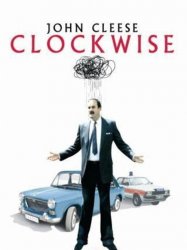
Clockwise (1986)
, 1h36Directed by Christopher Morahan
Origin United-kingdom
Genres Comedy
Themes Films about education
Actors John Cleese, Penelope Wilton, Alison Steadman, Stephen Moore, Patrick Godfrey, Joan Hickson
Roles Director of Photography
Rating65%





Brian Stimpson (Cleese), headmaster of Thomas Tompion Comprehensive School, has been elected to chair the annual Headmasters' Conference. Habitually disorganised as a young man, Stimpson is now fastidiously organized and punctual, and his school runs "like clockwork". He is the first headmaster of a comprehensive school to chair a Headmaster's Conference, that honour usually being reserved for heads of the more prestigious private schools.

The Osterman Weekend (1983)
, 1h43Directed by Sam Peckinpah, Rodney Amateau
Origin USA
Genres Drama, Thriller, Action, Adventure, Spy
Themes Spy films, Political films
Actors Rutger Hauer, John Hurt, Dennis Hopper, Craig T. Nelson, Meg Foster, Burt Lancaster
Roles Director of Photography
Rating57%





CIA director Maxwell Danforth (Lancaster) watches a filmed recording of agent Laurence Fassett (Hurt) and his wife making love. When Fassett goes into the bathroom to take a shower, two assassins enter the bedroom and kill his wife (Merete Van Kamp) by holding her down and injecting poison into her nostril with a syringe. It is suggested that the woman was an innocent bystander sacrificed by Danforth as collateral damage. Fassett, unaware of his employer's involvement, goes almost insane with grief and rage and begins to hunt down the assassins, eventually uncovering a Soviet spy network known as Omega.
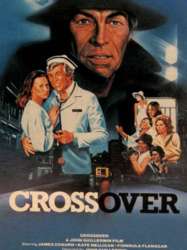
Mr. Patman (1981)
, 1h37Directed by John Guillermin
Origin Canada
Genres Drama, Thriller
Actors James Coburn, Kate Nelligan, Fionnula Flanagan, Lois Maxwell, Leslie Carlson, Jan Rubes
Roles Director of Photography
Rating55%





A film about a male nurse (James Coburn) working the night shift in a psycho ward who begins to lose his grip on reality. Directed by John Guillermin, responsible for the 1976 version of King Kong and The Towering Inferno, the film was released theatrically in Europe then recut and sold to television in North America.
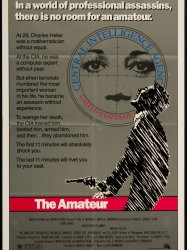
The Amateur (1981)
, 1h52Directed by Charles Jarrott
Origin Canada
Genres Thriller, Action, Crime
Themes Spy films, Films about terrorism, Political films
Actors John Savage, Christopher Plummer, Marthe Keller, Arthur Hill, Nicholas Campbell, George Coe
Roles Director of Photography
Rating58%





When his fiancée is murdered by terrorists, a CIA cryptographer blackmails his superiors into sending him on a field assignment into Czechoslovakia to assassinate those responsible. Once there, however, he discovers a web of deception underneath his fiancée's death.
 , 1h50
, 1h50Directed by Ralph Thomas
Origin United-kingdom
Genres Comedy, Comedy thriller, Action, Crime
Themes Heist films, Gangster films, Escroquerie
Actors Richard Jordan, Oliver Tobias, David Niven, Elke Sommer, Gloria Grahame, Richard Johnson
Roles Director of Photography
Rating57%





Tout juste sorti de prison, "Pinky" Green est déterminé à aller dans le droit chemin et, comme il est un électricien qualifié, il est engagé par une société appelée Global Group Security. Cette entreprise l'envoie travailler au système de sécurité de l'Atlantic and Pacific Bank dans le quartier de Mayfair. Un certain Ivan le Terrible le fait alors chanter pour qu'il les aide à dévaliser la banque de Berkeley Square.

The Changeling (1980)
, 1h55Directed by Peter Medak
Origin Canada
Genres Thriller, Fantastic, Horror
Themes Ghost films
Actors George C. Scott, Trish Van Devere, Melvyn Douglas, John Colicos, Barry Morse, Jean Marsh
Roles Director of Photography
Rating70%





John Russell (George C. Scott), a composer living in New York, New York, moves cross-country to Washington state following the deaths of his wife and daughter in a traffic accident while on a winter vacation in upstate New York. In suburban Seattle, John rents a large, old and eerie Victorian-era mansion and begins piecing his life back together.

Final Assignment (1980)
Directed by Paul Almond
Genres Drama, Thriller, Romance
Themes Political films
Actors Michael York, Geneviève Bujold, Alexandra Stewart, Burgess Meredith, Colleen Dewhurst
Roles Director of Photography
Rating46%





In this complex spy caper, Nicole (Geneviève Bujold) is a Canadian broadcast journalist working on assignment in the former Soviet Union. She is there to cover a visit by the Canadian prime minister, but along the way she discovers an unethical experimentation on children involving the use of steroids, she is also involved in smuggling out a girl for emergency brain surgery. Things get complicated when in the process, she develops a romantic liaison with Lyosha (Michael York), a bureaucrat in the Soviet press corps whose job is to watch her during her stay. A rich businessman (Burgess Meredith) she knows happens to be in Russia at the same time, and she asks him to help her in the smuggling attempt.
 , 2h30
, 2h30Directed by Delbert Mann
Origin USA
Genres Drama, War, Action, Historical
Themes Political films
Actors Richard Thomas, Ernest Borgnine, Donald Pleasence, Ian Holm, Patricia Neal, David Bradley
Roles Director of Photography
Rating70%





The film follows Paul Baumer, who during World War I enlists in the Imperial German Army with many of his high school friends, after being indoctrinated by their teacher (Donald Pleasence) as to the glory and superiority of German culture. After surviving training camp under the brutal Corporal Himmelstoss (Ian Holm), the young men board a troop train bound for the front lines. Ominously, at the same moment, they notice another train arriving in town loaded with wounded returning soldiers, who are carried off on stretchers. Once at the front lines, they are placed under the supervision of Stanislaus "Kat" Katzinsky, (Ernest Borgnine). Kat teaches them how to best take cover, how to find extra food, and other survival skills.

The Thirty Nine Steps (1978)
, 1h42Directed by Don Sharp
Origin United-kingdom
Genres Thriller, Action, Spy, Crime
Themes Spy films, Transport films, Rail transport films
Actors Robert Powell, David Warner, Eric Porter, Karen Dotrice, John Mills, Miles Anderson
Roles Director of Photography
Rating65%





In 1914, German spies are everywhere in London. After a spate of assassinations of important British politicians, a retired British intelligence officer, Colonel Scudder, realises his life and his mysterious black notebook are in danger. He turns to Richard Hannay, a mining engineer who is visiting Britain for a short time before returning to South Africa, who happens to be staying in a flat in the same building. Scudder tells Hannay of a plot by Prussian 'sleeper' agents, who are planning to pre-empt a war against the Triple Entente powers by assassinating a foreign minister of state visiting the UK.

The Four Feathers (1978)
, 1h40Directed by Don Sharp
Origin United-kingdom
Genres Drama, War, Adventure
Themes Films set in Africa, Political films
Actors Beau Bridges, Jane Seymour, Robert Powell, Simon Ward, Harry Andrews, Richard Johnson
Roles Director of Photography
Rating63%





Lieutenant Harry Faversham (Beau Bridges) is the latest scion of a prominent military family. A deeply sensitive boy, he is much traumatised by the early death of his kind-hearted mother. Though he never wants to be a soldier, he feels obliged to join the army. Though no coward (as he will later show), he has no interest in an army career. Having met and become engaged to Ethne, he decides to resign his commission. The fact that war in the Sudan is coming is irrelevant to this decision. During their engagement ball on the final day of his army career, Faversham receives telegrammes summoning him and three of his brother officers (Durrance, Willoughby and Trench) back to the regiment prior to being sent to the Sudan. As determined as ever to leave the army, Faversham burns the telegrammes so that he can pretend not to have been summoned back to the regiment before his commission expires. Willoughby sees him burning papers and notices that he is embarrassed to have been taken by surprise in doing so. On later realising that Faversham was burning the telegrammes from the army, Willoughby assumes that Faversham has done so because he is afraid of going to the Sudan. Durrance, Willoughby and Trench then send Faversham three white feathers, betokening cowardice, and turn their backs on him. When Faversham tries to explain to Eithne what has happened, she also reaches the same mistaken conclusion and gives him a fourth white feather. Following his regiment's deployment, Faversham realizes he has made a grave mistake and, having toyed with suicide, finally resolves to redeem his honour.

Absolution (1978)
, 1h35Directed by Anthony Page
Origin United-kingdom
Genres Drama, Thriller
Themes Films about education, Films about religion
Actors Richard Burton, Dominic Guard, David Bradley, Dai Bradley, Billy Connolly, Robert Addie
Roles Director of Photography
Rating64%





The film centres on Benjamin Stanfield and his unpopular, bespectacled friend, Arthur Dyson, who wears a leg brace; their form master, Father Goddard, and a travelling motorcyclist named Blakey. The opening scenes feature Connolly’s character, Blakey, arriving at the school on his motorbike. He asks Father Goddard (Burton) whether there are any odd jobs he can do but Goddard tells him that there are none available and that he should try in the town.
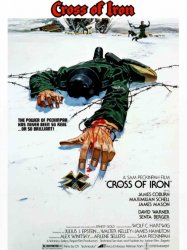
Cross of Iron (1977)
, 2h13Directed by Sam Peckinpah
Origin United-kingdom
Genres Drama, War, Action, Historical
Themes Politique, Political films
Actors James Coburn, Maximilian Schell, James Mason, David Warner, Senta Berger, Klaus Löwitsch
Roles Director of Photography
Rating73%





The movie opens with German children's song "Hänschen klein" mixed with black-and-white footage of prewar and war scenes. It then segues to color and a German platoon raid on a Russian forward outpost led by Sergeant Rolf Steiner (James Coburn), during which his men capture a young Russian boy-soldier (Slavko Štimac).
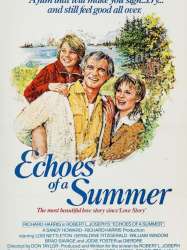
Echoes of a Summer (1976)
, 1h39Directed by Don Taylor
Origin USA
Genres Drama
Actors Richard Harris, Jodie Foster, Lois Nettleton, Brad Savage, Geraldine Fitzgerald, William Windom
Roles Director of Photography
Rating63%





The eleven-year-old Deirdre (Jodie Foster) suffers from an incurable heart condition. For two years, her parents Eugene (Richard Harris) and Ruth (Lois Nettleton) have consulted heart specialists - but without any success. Now they have gone to Mahone Bay, Nova Scotia to ensure that her last days are as pleasant as possible. The nine-year-old neighbour boy Phillip (Brad Savage) is the only one who brings a little happiness into the home, since Deirdre knows exactly what is wrong with her. After she suffers from an acute attack and the end comes faster than everybody had thought, Deirdre and Phillip succeed anyway in celebrating the twelfth birthday of the girl as a day of joy.

The Story of David (1976)
, 3h11Directed by David Lowell Rich, Alex Segal
Origin USA
Genres Drama, Documentary, Historical
Themes Films about religion, Films based on the Bible, Films about Jews and Judaism
Actors Timothy Bottoms, Anthony Quayle, Norman Rodway, Keith Michell, Jane Seymour, Susan Hampshire
Roles Director of Photography
Rating62%





The narrative follows David's life from the time he was a boy shepherd to his death as the aged King of Israel. Part 1: David and King Saul relates the exploits of the young David (Bottoms) and his relations with King Saul (Quayle). It begins with David as a humble shepherd who becomes harp player to the King who is distraught after the prophet Samuel has chastised him for failing to follow the instructions of the Israelite god, Yahweh, in a battle. Samuel informs Saul that Yahweh will anoint another king in his place. Saul is full of jealous rage as David becomes hero to his people after the battle with Goliath and his subsequent anointment. Saul makes attempts on David's life. David is highly conflicted over his devotion to Saul as Yahweh's first anointed King over the people. He will not kill Saul, despite Saul's constant attempts on his own life, as he feels it will offend the deity. Saul dies in battle and David assumes the throne. Part 2: David the King begins with a mature David (Michell) and tells the story of his sinning with Bathseba (Seymour), including the scenes with her bath and their subsequent love-making. As David ages he is challenged by the treason of one of his sons, and eventually passes the crown on to another of his sons, Solomon.

The Wilby Conspiracy (1975)
, 1h45Directed by Ralph Nelson
Origin United-kingdom
Genres Drama, Thriller, Action, Adventure
Themes Films set in Africa, Films about racism, Political films
Actors Michael Caine, Sidney Poitier, Nicol Williamson, Prunella Gee, Rutger Hauer, Saeed Jaffrey
Roles Director of Photography
Rating63%





In apartheid-era South Africa, Shack Twala (played by Sidney Poitier), a black revolutionary who had served time on Robben Island, is freed by Rina van Niekerk (Prunella Gee), his Afrikaner defence attorney, because he would be a victim of retroactive legislation. Rina, estranged from her husband Blane (Rutger Hauer), is having a relationship with an English mining engineer, Jim Keogh (Michael Caine), who has attended Shack's trial. Surprised by the verdict, Rina, Jim and Shack go off to celebrate at her house. They are stopped by the South African Police who are conducting identity document checks and arresting everyone who does not have their papers on them. As Shack has only just been released from prison he will not receive his papers until the next day. The police Constable and Shack antagonise each other leading to Shack being handcuffed and arrested. When Rina attempts to pull the Constable off Shack, the policeman hits her, knocking her to the ground. Jim assaults and knocks out the Constable making all three fugitives.
 Connection
Connection


